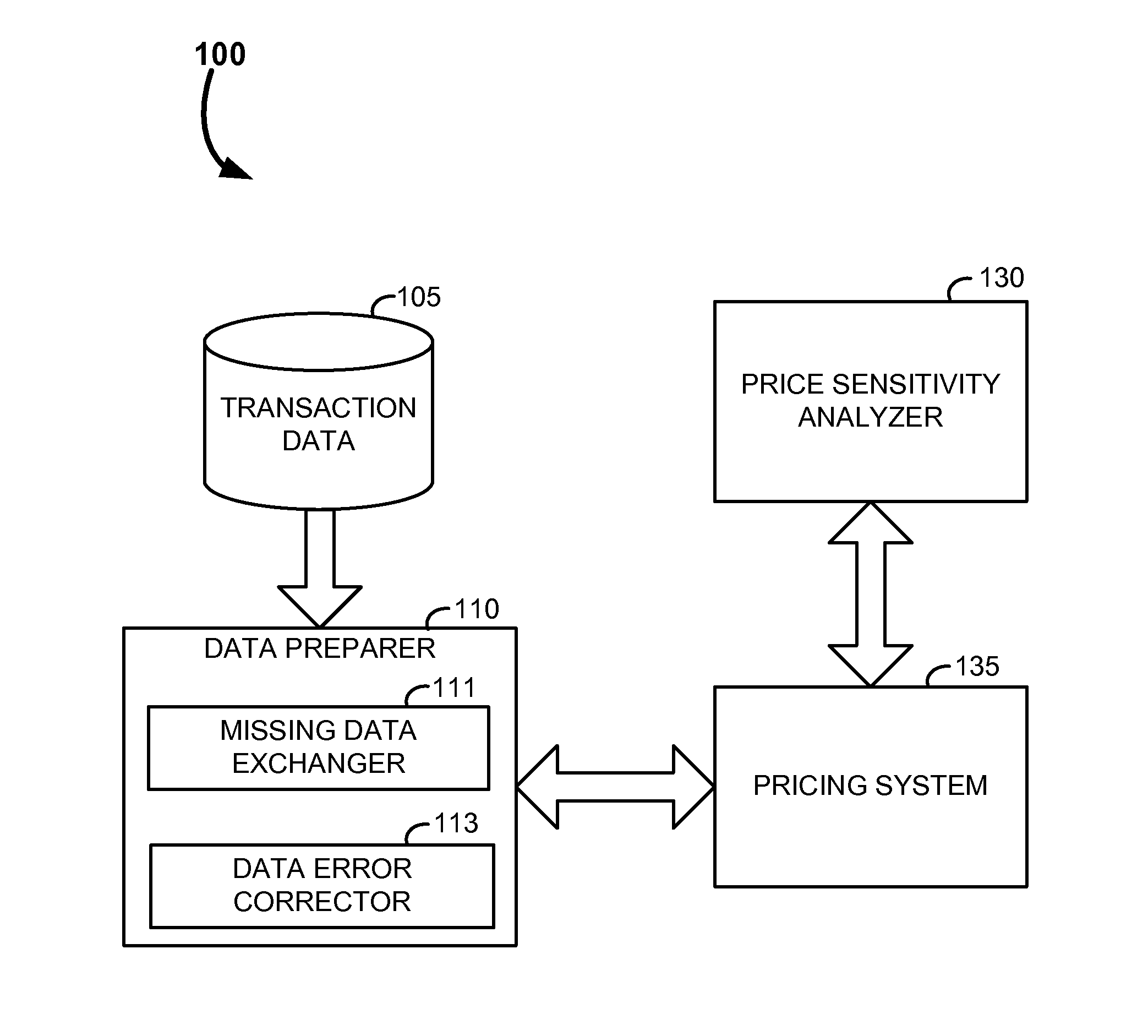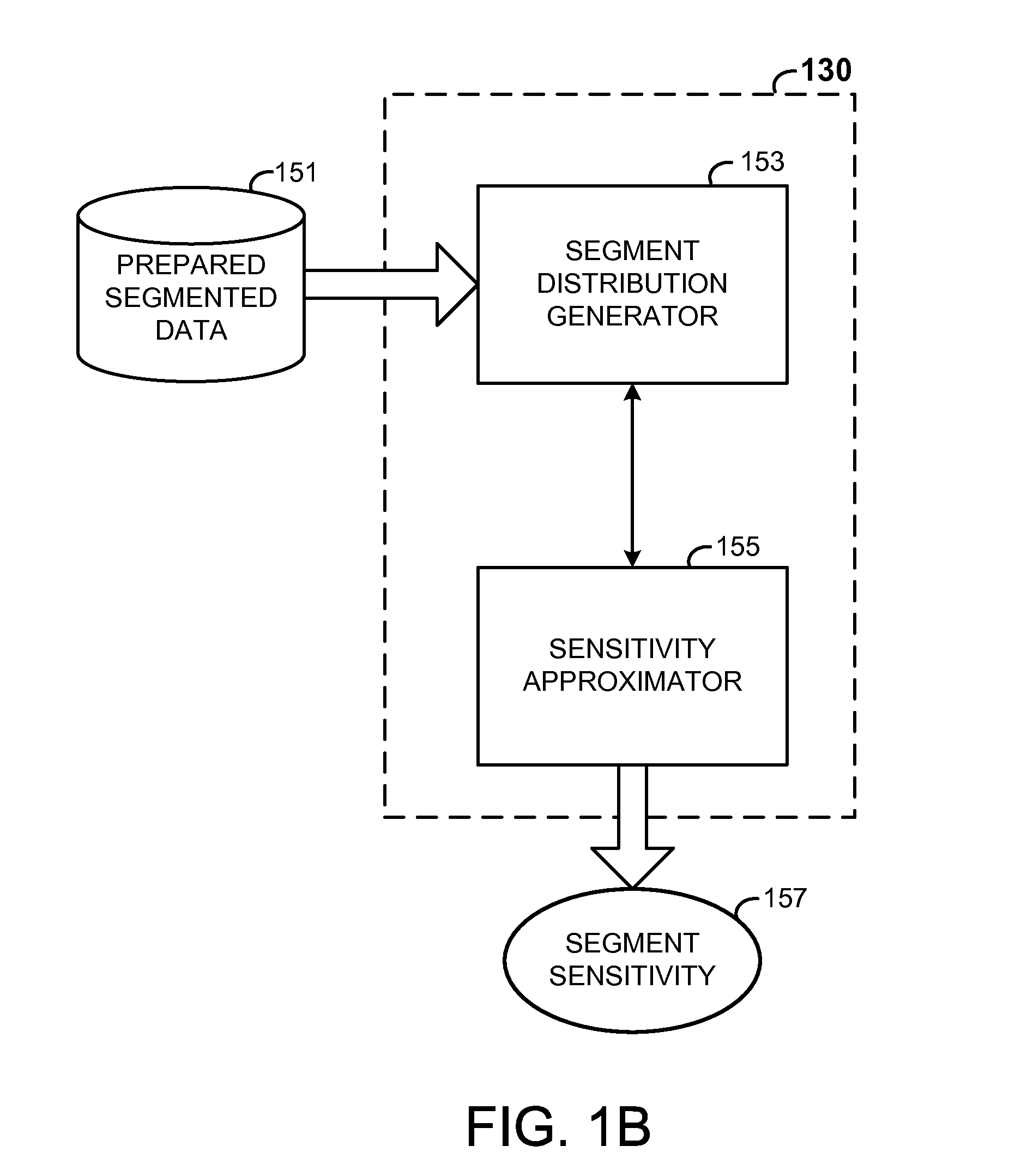System and Methods for Generating Price Sensitivity
a price sensitivity and price technology, applied in the field of system and system methods for generating price sensitivity, can solve the problems of b2b markets renowned for being data-poor environments, affecting the effectiveness of classical approaches to analyzing pricing impacts, and scarce availability of large sets of accurate and complete historical sales data, etc., to achieve smooth effect of noise variation
- Summary
- Abstract
- Description
- Claims
- Application Information
AI Technical Summary
Benefits of technology
Problems solved by technology
Method used
Image
Examples
Embodiment Construction
[0084]The present invention will now be described in detail with reference to selected preferred embodiments thereof as illustrated in the accompanying drawings. In the following description, numerous specific details are set forth in order to provide a thorough understanding of the present invention. It will be apparent, however, to one skilled in the art, that the present invention may be practiced without some or all of these specific details. In other instances, well known process steps and / or structures have not been described in detail in order to not unnecessarily obscure the present invention. The features and advantages of the present invention may be better understood with reference to the drawings and discussions that follow.
[0085]Many pricing methodologies have been developed in order to generate additional profit for retailers and manufacturers. Within the Business to Consumer (B2C) markets, large quantities of statistical data are readily available, thereby enabling st...
PUM
 Login to View More
Login to View More Abstract
Description
Claims
Application Information
 Login to View More
Login to View More - R&D
- Intellectual Property
- Life Sciences
- Materials
- Tech Scout
- Unparalleled Data Quality
- Higher Quality Content
- 60% Fewer Hallucinations
Browse by: Latest US Patents, China's latest patents, Technical Efficacy Thesaurus, Application Domain, Technology Topic, Popular Technical Reports.
© 2025 PatSnap. All rights reserved.Legal|Privacy policy|Modern Slavery Act Transparency Statement|Sitemap|About US| Contact US: help@patsnap.com



